Just like layers of the earth, the ocean has layers too! Have you ever wondered how you could see them without scuba diving in the ocean? Well, you can learn about the ocean zones and the layers of the ocean easily at home or in the classroom! Check out this hands-on earth science project and look for the free printable ocean zones pack.
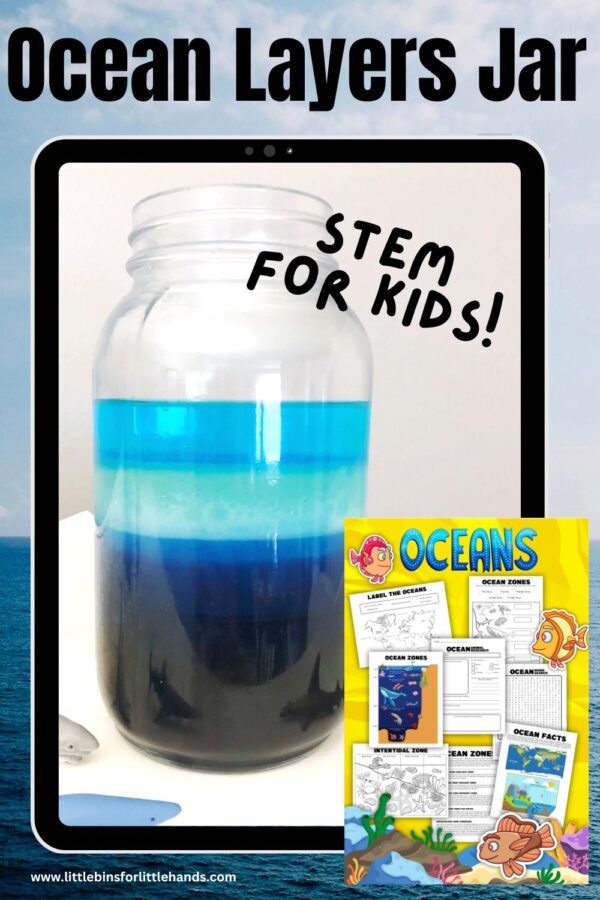
Explore Ocean Science for Kids
Our fun and simple ocean layers activity makes this big idea tangible for kids. Explore the zones or layers of the ocean with a liquid density tower experiment for kids. We love easy ocean science activities!
Add this simple ocean layers jar to your OCEAN lesson plans this season. This fun ocean experiment allows you to explore two different concepts, a marine biome and a liquid density tower. Kids can explore the different zones or layers of the ocean and investigate what lives in each layer.
This ocean layers experiment asks:
- How many ocean zones are there?
- What are the different layers of the ocean?
- Why don’t different liquids mix?
Let’s explore the different ocean layers with a liquid density experiment! Combine both kitchen science and ocean biome investigation with one neat activity!
What Are The Layers of the Ocean?
The ocean is a type of marine biome, and the layers or levels of the ocean represent how much sunlight each layer receives. The amount of light dictates what lives in what layer!
LOOK: Biomes Of The World
The 5 ocean layers are:
- Trench Layer
- Abyss Layer
- Midnight Layer
- Twilight Layer
- Sunlight Layer.
The top three layers—sunlight, twilight, and midnight—make up the pelagic zone.
The abyss and trench layers are found in the benthic zone. Very few creatures are found in the bottom zones!
Layers Of The Ocean In A Jar
This fantastic layers of the ocean resource will help you dive further into the ocean zones!
You Will Need:
- A large glass jar 30 oz or bigger (mason jars work well)
- Vegetable Oil
- Dawn dish soap
- Light corn syrup
- Water
- Rubbing Alcohol
- Black, blue, and dark blue food coloring
- 5 paper cups
- 5 plastic spoons
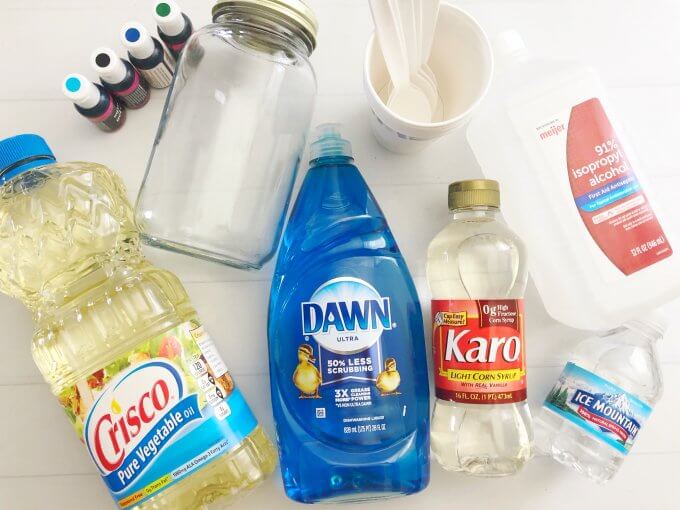
How To Make The Layers Of The Ocean
You are going to be making several layers of the ocean floor in this ocean layers experiment.
1. Trench layer:
Measure 3/4 cup of corn syrup, mix with black food coloring and pour into the bottom of your mason jar.
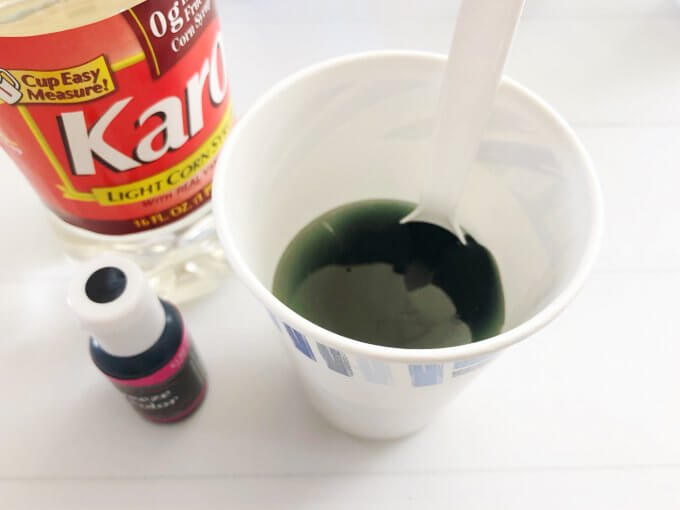
2. Abyss layer:
Measure 3/4 cup of dish soap and slowly pour into the bottom of your mason jar on top of the corn syrup.
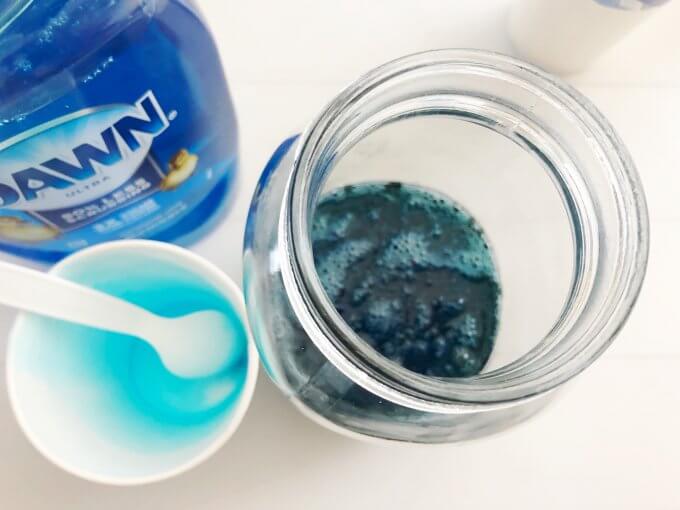
3. Midnight layer:
Measure 3/4 cup of water, mix with dark blue food coloring and carefully pour into the bottom of your mason jar on top of the dish soap.
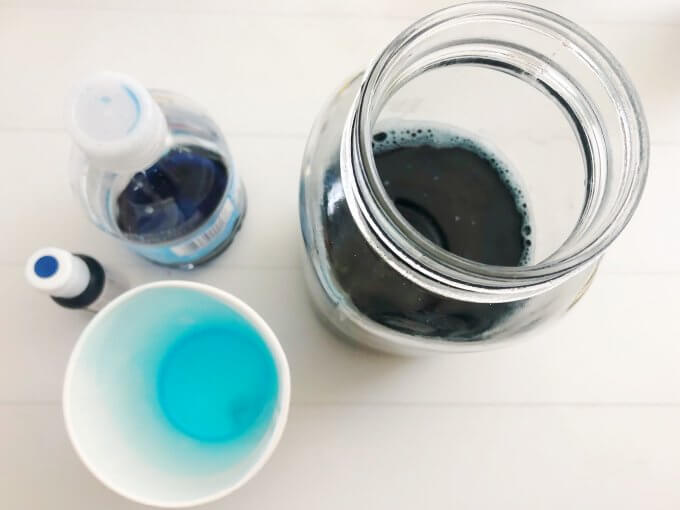
4. Twilight layer:
Measure 3/4 cup of oil and pour into the bottom of your mason jar on top of the water.
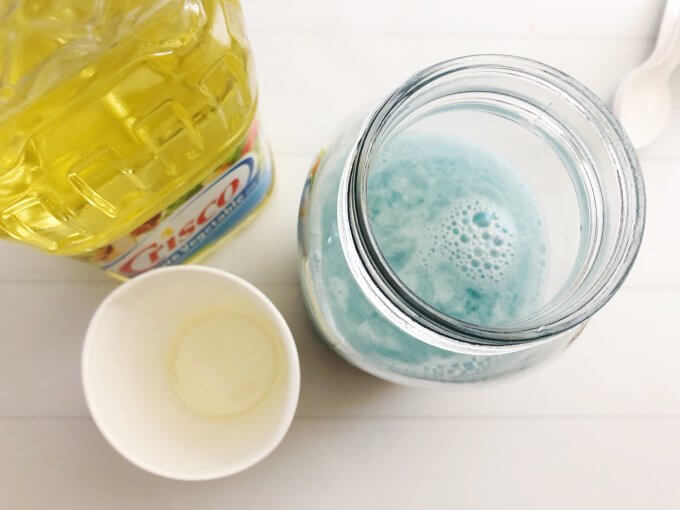
5. Sunlight layer:
Measure 3/4 cup of rubbing alcohol, mix with light blue food coloring and pour into your mason jar on top of the oil layer.
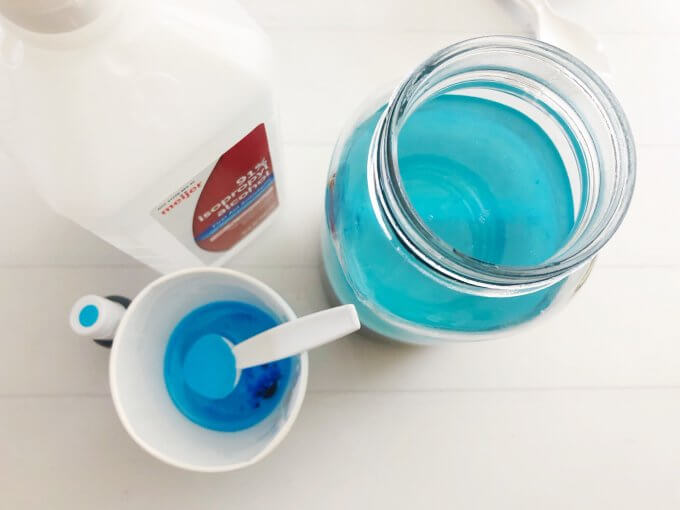
Classroom Tips
If this seems too complicated with all the different layers for your kids, try it with fewer layers! In our ocean science activity, the ocean is divided into two major areas or zones, further divided into the five ocean layers.
You can also say there are three areas of the ocean: the surface ocean, the deep ocean, and an in-between layer!
These two major ocean areas include the ocean floor (also known as the benthic zone) and the ocean water (known as the pelagic zone).
Make your jar with just two areas using dark blue water and oil! You can even add sand and shells. Did you see our model in the video above?
LOOK: Ocean Activities For Preschoolers
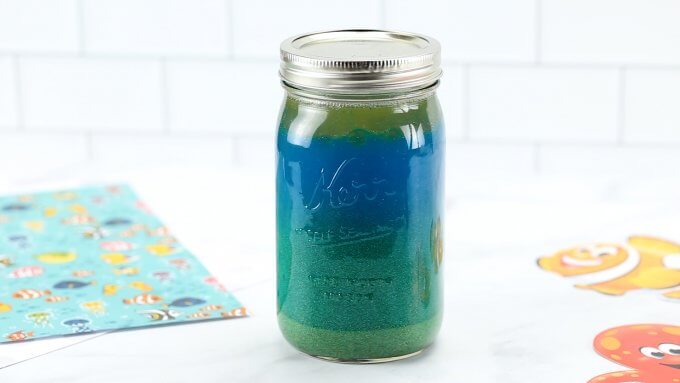
Liquid Density Tower Explanation
Next, let’s explore how a liquid density tower involves matter (the stuff that makes up substances), and specifically liquid matter (matter also includes solids and gasses).
Matter has different densities meaning some are heavier and some are lighter. It’s hard to imagine that different liquids have different weights for the same amount of volume, but they do!
Like solids, liquids are made up of different numbers of atoms and molecules. In some liquids, these atoms and molecules are packed together more tightly, resulting in a denser liquid like corn syrup!
When you add the liquids to a jar they don’t mix because they don’t have the same density. Denser liquids will be to the bottom of the jar, less dense liquids to the top. This separation forms the layers of color in the jar!
LOOK: Density Experiments For Kids
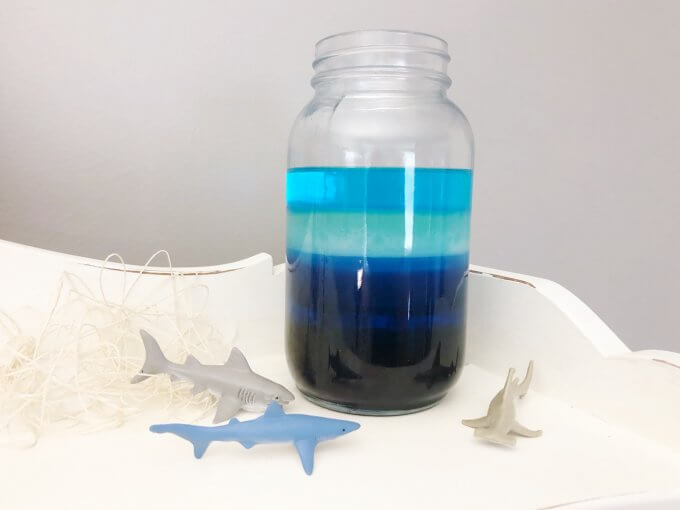
More Info About The Ocean Zones
Epipelagic Zone (Sunlight Zone)
The first layer is the shallowest zone and is home to almost 90% of all ocean life known as the epipelagic zone. It extends from the surface to 200 meters (656 feet). It is the only zone fully lit by the sun. Plants and animals thrive here.
Mesopelagic Zone (Twilight Zone)
Below the epipelagic zone is the mesopelagic zone, extending from 200 meters (656 feet) to 1,000 meters (3,281 feet). Very little sunlight reaches this zone. No plants grow here. Some sea creatures living in this dark zone have special organs that glow in the dark.
Bathypelagic Zone (Midnight Zone)
The next layer is called the bathypelagic zone. It is sometimes referred to as the midnight zone or the dark zone. This zone extends from 1,000 meters (3,281 feet) down to 4,000 meters (13,124 feet). Here the only visible light is that produced by the creatures themselves. The water pressure at this depth is immense, reaching 5,850 pounds per square inch.
Despite the pressure, a surprisingly number of creatures can be found here. Sperm whales can dive down to this level in search of food. Most of the animals that live at these depths are black or red in color due to the lack of light.
Abyssopelagic Zone (The Abyss)
The fourth layer is the abyssopelagic zone, also known as the abyssal zone or simply the abyss. It extends from 4,000 meters (13,124 feet) to 6,000 meters (19,686 feet). The water temperature is near freezing, and the sunlight doesn’t penetrate to these depths, so the waters here are extremely dark. The animals that live here often use bioluminescence to communicate.
Hadalpelagic Zone (Trenches)
Beyond the abyssopelagic zone lies the forbidding hadalpelagic zone also known as the hadal zone. This layer extends from 6,000 meters (19,686 feet) to the bottom of the deepest parts of the ocean. These areas are mostly found in deep water trenches and canyons.
The deepest ocean trenches are considered the least explored and most extreme marine ecosystems. They are characterized by a complete lack of sunlight, low temperatures, nutrient scarcity, and extremely pressures. Despite the pressure and temperature, life can still be found here. Invertebrates such as starfish and tube worms can thrive at these depths.
The Mariana Trench in the Pacific Ocean off the coast of Japan is the deepest oceanic trench on Earth and has been made a US National Monument. Studies have even concluded that microbial life can be found in the trench depths.
Click here for your FREE Printable Ocean Activities Guide!
More Fun Ocean Ideas To Try
- How Do Ocean Animals Stay Warm?
- Oil Spill Experiment
- Ocean Waves In A Bottle
- Beach Erosion Demonstration
- How Do Fish Breathe?
- Ocean Currents Activity
- Map the Ocean Floor
Printable Ocean Science Pack for Kids
Check out The Complete Ocean Science and STEM Pack in our SHOP!
- These simple-to-set up and easy-to-use projects are perfect for an ocean theme any time of the year! They also include an easy-to-read STEM story with challenges!
- Kids will love learning how fish breathe or how squid moves with hands-on activities.
- Learn about tide pools, clean up an oil spill, explore the zones, and more!
- Perfect for grades K-4! Note: You do not need to live near the ocean to use this entire pack!


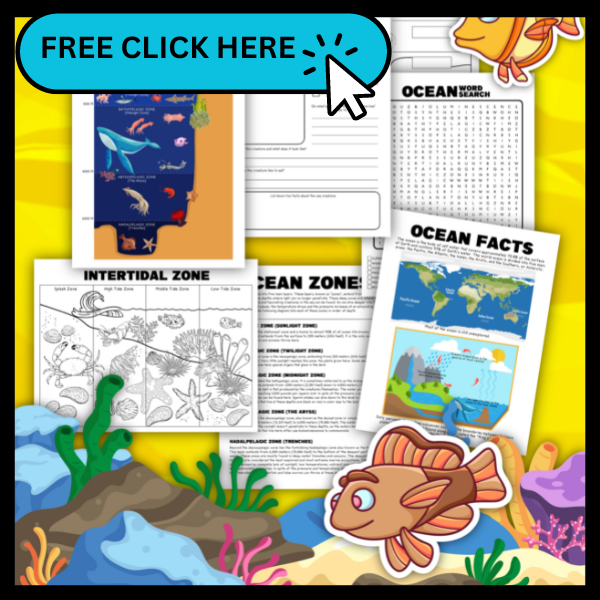







A note for anyone trying this experiment! You will need 91% rubbing alcohol! We used 70% and it sank below the vegetable oil and combined with the water layer.
Hello i work in a preschool. if the jar above is shaken by little hands will it even out in the correct order? or will it be ruined? thanks!
It will separate but it will take time. I might just stick with an oil and water layer with a bit of sand for preschool ages!